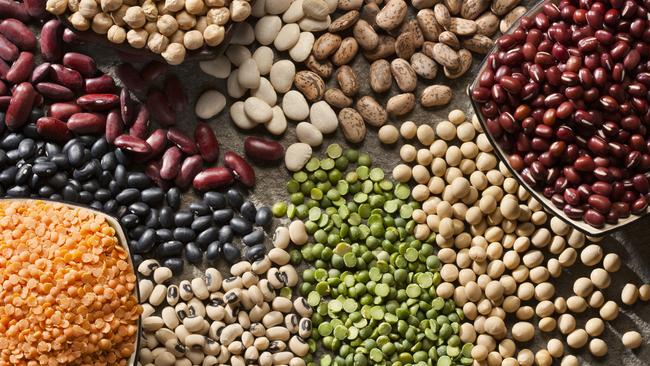The battle brewing over how much red meat you eat
Scientists advising the government have drafted recommendations that would tell Americans to limit red meat

Get ready for a big debate over the amount of red meat on your plate. Scientists advising the US government on its next round of dietary guidelines have drafted recommendations that would tell Americans to limit how much red meat they eat. It is part of an effort to nudge us to eat more plant foods, including beans, peas and lentils.

The draft recommendations have drawn an immediate outcry from the meat industry, setting up a potential fight over the final guidelines — expected late next year — and the amount of red meat we should have in our diets. Nutrition researchers largely heralded the move. Scientists have long said the cholesterol and fat in burgers and steaks can raise the risk of cardiovascular disease and other health problems. Current US dietary guidelines recommend steering clear of too much saturated fat but stop short of saying people should limit red meat. Beef has long been a centrepiece of American meals, and meat-heavy diets like carnivore and paleo remain popular. Men, in particular, eat more meat, poultry and eggs than existing guidelines recommend, mainly a lot of red meat and processed products, such as sliced ham and bacon. “It seems like it will be hard-pressed to change,” said Lindsey Smith Taillie, associate professor in the nutrition department at the University of North Carolina Gillings School of Global Public Health.
“We have very strong preferences for red meat that are tied up in all sorts of social and cultural factors.”
What the guidelines do
The US dietary guidelines, updated every five years, have a broad impact. They shape school lunch programs, mold public-health efforts and influence what food companies make. The meat industry pushed back on the draft recommendations, which were created by a committee of scientists advising the government on the guidelines.
“It’s baffling that we are trying to get Americans to cut out red meat when the evidence indicates nutrient deficiencies and chronic disease are increasing as red meat consumption declines,” said Shalene McNeill, executive director of nutrition science at the National Cattlemen’s Beef Association, a trade association for cattle farmers and ranchers.
McNeill, who is also a registered dietitian, noted that red meat contains important nutrients including potassium, iron and choline.
The committee’s draft proposals recommend that the dietary guidelines emphasise vegetables, fruits, legumes, whole grains, nuts, fish and seafood, low-fat and non-fat dairy and unsaturated fats. It is a “plant forward” way of eating, explained Christopher Gardner, a professor at the Stanford University School of Medicine and a committee member.
The committee is also proposing changes to the protein-foods category that would de-emphasise meat. In a public meeting, members suggested including beans, peas and lentils in the protein-foods category. They also suggested that “meats, poultry, eggs” move from the first group listed in the category to the last, below seafood and plant sources of protein including nuts, seeds and soy products.
Red meat and you
Some studies have found that unprocessed red meat consumption is associated with heart disease and premature death. Other research, however, has found only a modest link or no link to cardiovascular disease.
The high amounts of saturated fat and cholesterol in beef can raise people’s LDL or “bad” cholesterol. High LDL cholesterol is a major risk factor for heart attacks, said Dr Walter C. Willett, a professor of epidemiology and nutrition at the Harvard T.H. Chan School of Public Health.
Red meat contains iron, an important nutrient. But when iron is consumed in excess, it causes inflammation that “triggers underlying processes for heart disease,” said Maya Vadiveloo, associate professor in the department of nutrition at the University of Rhode Island and chair of the American Heart Association’s Lifestyle Nutrition committee.
Other research has found that red meat consumption raises the risk of diabetes. Research links processed meat to heart disease, stroke and some cancers. The current guidelines advise people to choose fresh lean meat over processed products such as hot dogs and sausages.
The committee’s report still has to be finalised and sent to the US Department of Health and Human Services and the US Agriculture Department. HHS and USDA say they will post the report online later this year. The public will then have 60 days to submit comments. The agencies will consider the recommendations and expect to release the new dietary guidelines by the end of 2025. The government doesn’t always follow the recommendations of its scientific advisory committee. The advisory committee for the 2020 guidelines recommended making significant cuts to limits for added sugars and alcohol consumption. The government rejected the cuts.
The Wall Street Journal



To join the conversation, please log in. Don't have an account? Register
Join the conversation, you are commenting as Logout